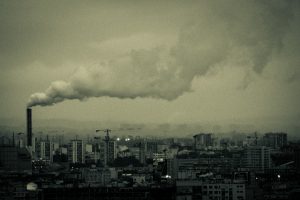Local Pollution as a Determinant of Residential Electricity Demand
August 26, 2020

https://www.flickr.com/photos/dbakr/9380065716
Associate Professor Alberto Salvo (NUS Economics) investigates the link between increasing home energy demand and air pollution in ‘Local Pollution as a Determinant of Residential Electricity Demand’ (Journal of the Association of Environmental and Resource Economists, 2020).
PM2.5, defined as particulate matter of diameter up to 2.5 x 10-6 m, are ambient particles that cause outdoor air pollution such as smog or haze. Prior to the study, A/P Salvo hypothesized that higher PM2.5 levels, that is higher visible air pollution, caused Singaporean households to stay indoors more, close natural ventilation, and increasingly use electrical appliances such as air purifiers and air conditioning units.
This switch from natural ventilation methods, such as opening windows, to portable air purifiers and more powerful wall-mounted AC units is classed as ‘defensive behaviour’ – a response to ambient air pollution. This defensive behaviour increases energy demand and contributes to more greenhouse gas emissions.
The study recorded the utility meter readings of 130,000 Singaporean households between September 2012 and December 2015, a 1 in 10 random sampling of Singapore’s 1.3 million households. In conjunction with detailed weather and pollution data over the same time period, A/P Salvo was able to identify patterns of user behaviour.
After application of the OLS (Ordinary Least Squares) and 2SLS (Two-Stage Least Squares) regression analysis models, the paper summarizes that a routine and visible 10 mg/m3 increase in PM2.5 levels raises overall electricity demand by 1%. By extending the analysis to Beijing’s pollution levels of 98 mg/m3, A/P Salvo predicts an increase of 10% in electricity demand were Singapore’s air pollution to rise to similar levels as in other more polluted Asian cities.
Commenting on the pressing issue of energy demand and mitigating climate change in Singapore, A/P Salvo considers his current research as contributing towards the longer-term forecasting of energy demand, and encouraging the need for public policymakers to take rising incomes, and the subsequent defensive behaviour, into account when modelling the effects of climate change.
Singapore is predicted to get hotter by 1°C by the year 2060, regardless of the Paris Climate Agreements of 2016, and this will undoubtedly cause higher residential electricity use. With every 10 mg/m3 increase in air pollution resulting in a percentage increase in energy consumption, unless the problem of air pollution is seriously tackled, there is an appreciable risk of a future Singapore where it is simply too hard to breathe.
Discover the research impact here.
Read the article in the Journal of the Association of Environmental and Resource Economists here.
